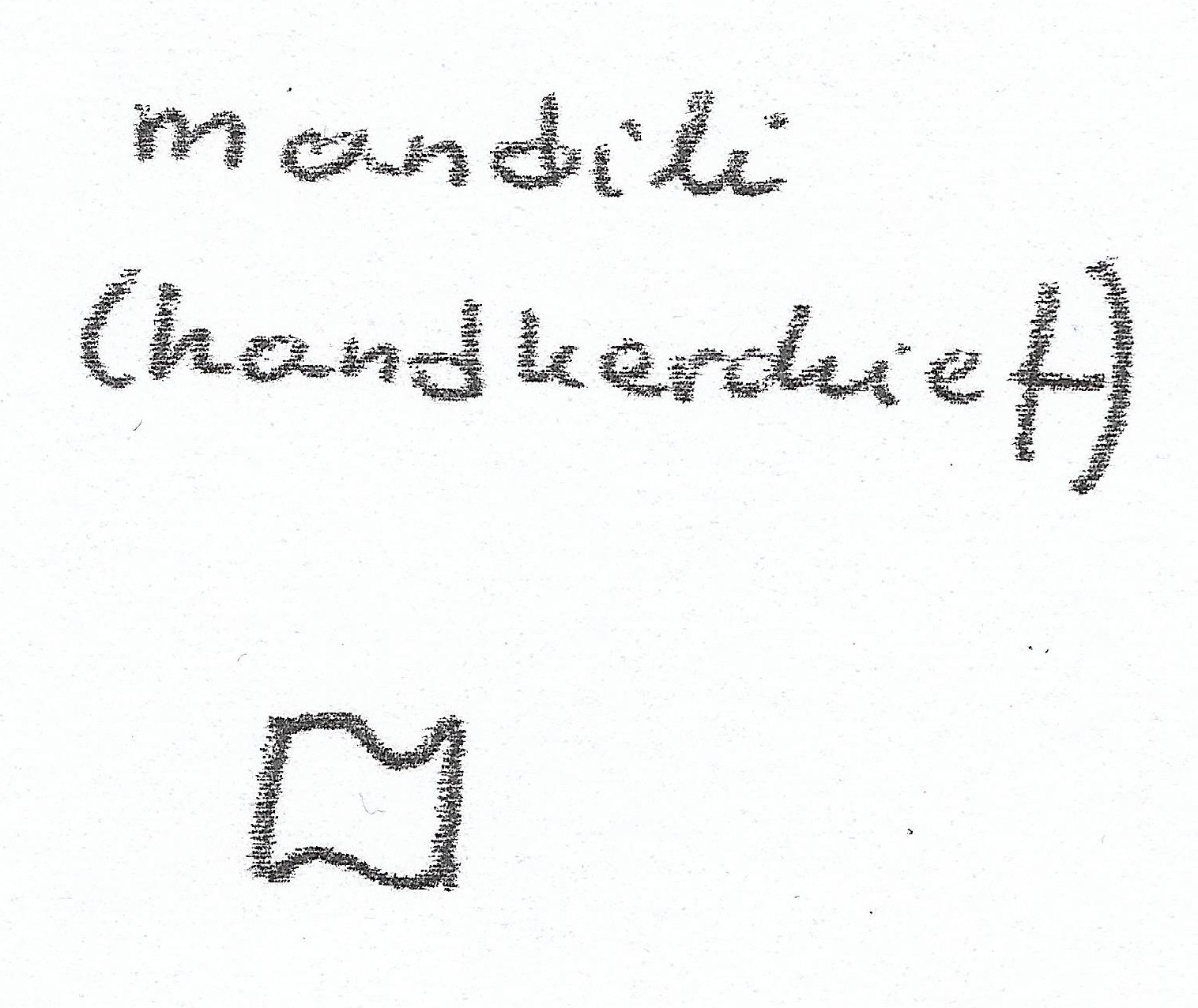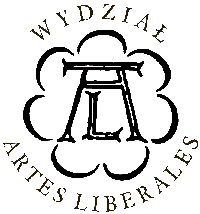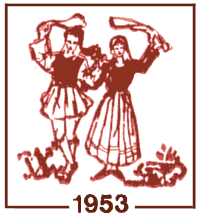| Testimony of: | kerchief |
| Source | Καμπουρίδης 1983, 224 (in EEH, sv. Μαντίλια, p. 370) |
| Original text | Κατά την επιστροφή στο σπίτι του γαμπρού, μπροστά πήγαιναν τα μουσικά όργανα, ακολουθούσαν έφιππποι οι νεόνυμφοι, ο κουμπάρος, η παράνυφος (συνοδός της νύφης) κι όσοι είχαν άλογα και πίσω τους όλοι οι προσκαλεσμένοι κατευθύνονταν στο σπίτι του γαμπρού, εκτός από τους γονείς της νύφης, που επέστρεφαν στο σπίτι τους και περίμεναν να έρθουν να τους πάρουν από μέρους του γαμπρού. Κατά την διαδρομή μερικοί νιόπαντροι, άντρες και γυναίκες, κρατώντας μαντήλια έπιανε ο καθένας χωριστά τις δύο διαγώνιες άκρες και υψώνοντας τα χέρια με το μαντήλι πάνω από τα κεφάλια τους χορεύοντας και χτυπώντας τα πόδια τους στο έδαφος στρέφονταν άλλοτε δεξιά κι άλλοτε αριστερά μπροστά στος έφιππους νεόνυμφους. |
| English translation | During the return to the house of the groom the musical instruments were leading at the front and, right after the musicians, the marrying couple followed, then the man of honour, the bridesmaids, then – whoever had a horse, and after them all the people that were invited headed towards the house of the groom, except for the parents of the bride. They would go back home and there wait to be taken by the groom’s family to his house. During the procession, some newlywed men and women held a kerchief gripped by its opposite, diagonal corners and raised their arms with the kerchief above their heads, while dancing and tapping their feet on the ground and turning once to the left and once to the right in front of the married couple, who were mounted on a horse. |
| Time/occasion of occurence | wedding |
| Region of occurence | Nikopoli, Pontus - Show on map |
| Function | decorative, |
| Symbol in Kinetography score |
|


